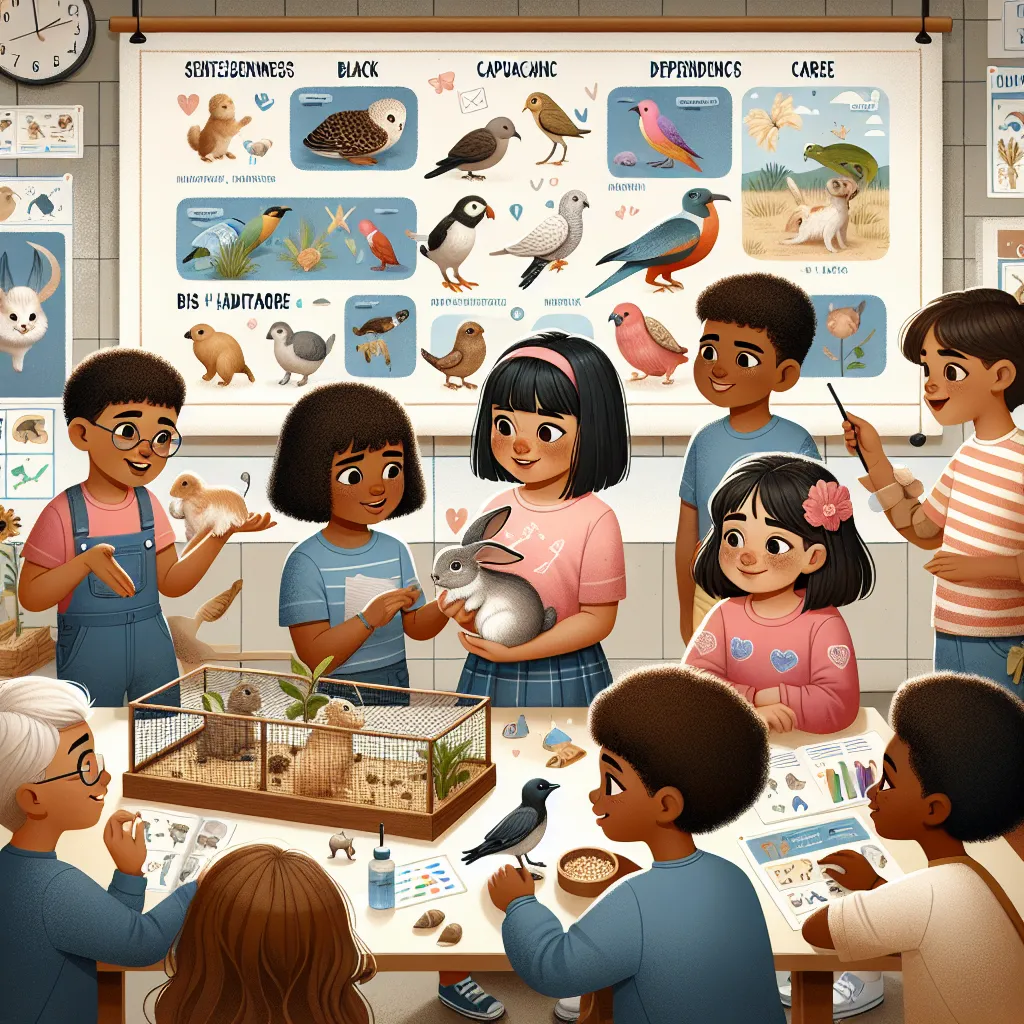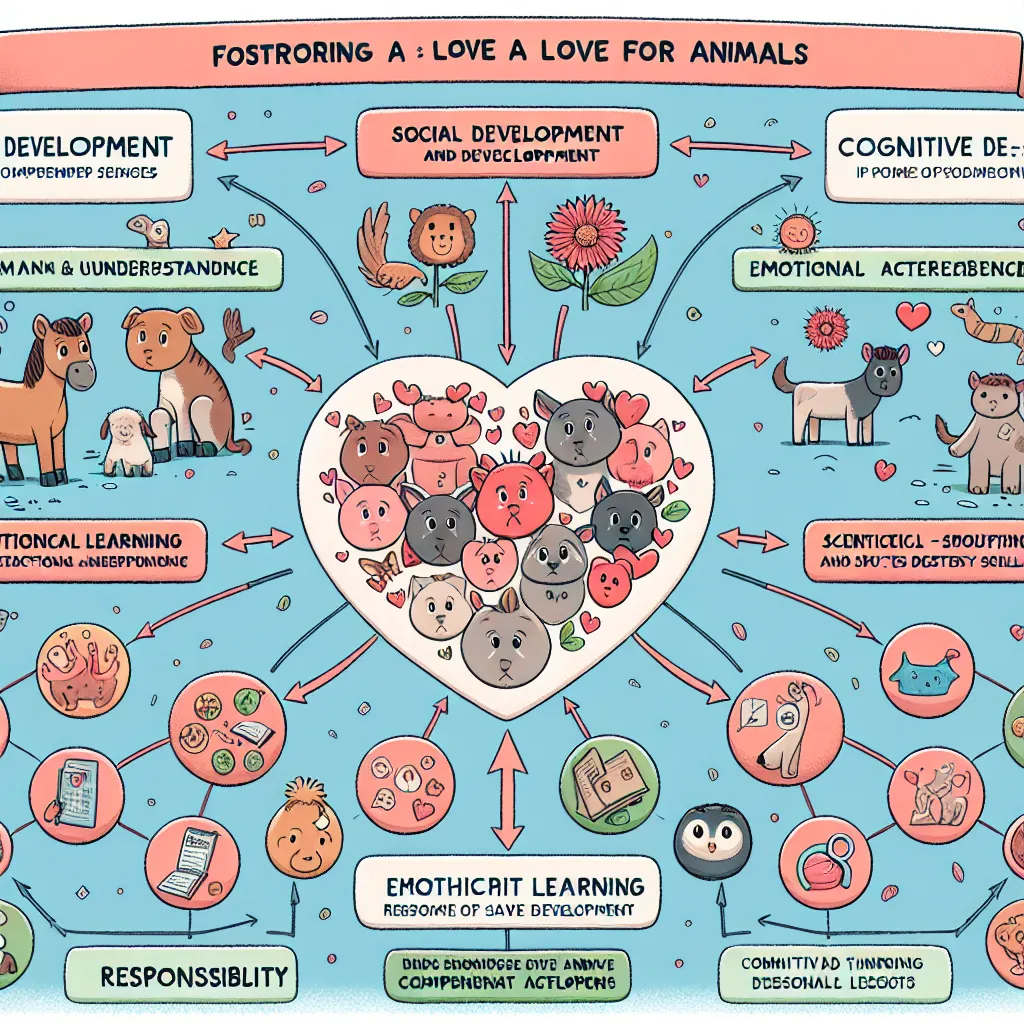Ask AI on The Internet
Question: why this is important and how can you as foundation and intermediate phase teachers effectively foster a sense of compassion and love for animals in your students?Harvard referencing
Promoting compassion and love for animals among students is crucial for several reasons. First, it encourages the development of empathy, which is essential for building positive relationships with others. Empathy is not only a core component of emotional intelligence but also a key trait that fosters inclusive communities and reduces instances of bullying (Goleman, 1995). Secondly, teaching students to care about animals can enhance their understanding of environmental stewardship and the interconnectedness of all life forms (Kellert, 2003). As foundation and intermediate phase teachers, there are several strategies to effectively foster a sense of compassion and love for animals in your students: 1. **Integrate Animal-related Topics into the Curriculum**: Include lessons and activities that focus on animals, their habitats, and the various ways they contribute to the ecosystem. This can be done through science and social studies lessons about biodiversity, life cycles, or endangered species (Chawla, 2006). 2. **Storytelling and Literature**: Use books and stories that feature animals as central characters. Literature can evoke emotional responses and allow students to see the world from the perspectives of different animals, helping to build empathy (Nodelman, 1996). 3. **Interactive Experiences**: Organize field trips to local farms, nature reserves, or animal shelters. Firsthand experiences with animals can significantly enhance students’ understanding and compassion (Sobel, 1996). 4. **Classroom Pets**: Having a classroom pet can provide daily opportunities for students to learn responsibility and compassion. Taking care of a pet can teach students about the needs and well-being of another living creature (Heimlich, 2001). 5. **Role Modeling**: Teachers should model compassionate behavior by treating animals with respect and care. Children often emulate the behavior of adults, making it essential for teachers to demonstrate the values they wish to instill (Bandura, 1977). 6. **Student-led Projects**: Encourage students to engage in projects that help animals, such as fundraising for animal shelters, creating awareness campaigns about endangered species, or organizing community clean-up activities to protect local wildlife (Hart, 1997). 7. **Empathy-building Activities**: Integrate activities that promote role-playing and reflection, allowing students to experience the perspective of animals. This can help deepen their understanding and compassion (Feshbach & Feshbach, 2009). By implementing these strategies, teachers can effectively cultivate a sense of compassion and love for animals in their students, contributing to their overall emotional and social development. #### References Bandura, A. (1977). Social Learning Theory. Englewood Cliffs, NJ: Prentice Hall. Chawla, L. (2006). Learning to love the natural world enough to protect it. *Barn*, 2, 57-78. Feshbach, N. D., & Feshbach, S. (2009). Empathy and Education. *In J. Decety & W. Ickes (Eds.), The Social Neuroscience of Empathy* (pp. 85-98). Cambridge: MIT Press. Goleman, D. (1995). Emotional Intelligence: Why It Can Matter More Than IQ. New York: Bantam Books. Hart, R. (1997). Children's Participation: The theory and practice of involving young citizens in community development and environmental care. New York: UNICEF. Heimlich, J. E. (2001). Classroom pets and young children: Supporting early development. *Early Childhood Education Journal*, 29(2), 81-87. Kellert, S. R. (2003). Kinship to Mastery: Biophilia in Human Evolution and Development. Washington, D.C.: Island Press. Nodelman, P. (1996). The Pleasures of Children's Literature. White Plains, NY: Longman. Sobel, D. (1996). Beyond Ecophobia: Reclaiming the Heart in Nature Education. Great Barrington, MA: Orion Society.
Think your answer is better than the AI's? Post it below.
Question Tags
If you want your question answered by an AI, click here.







Post your own comment: